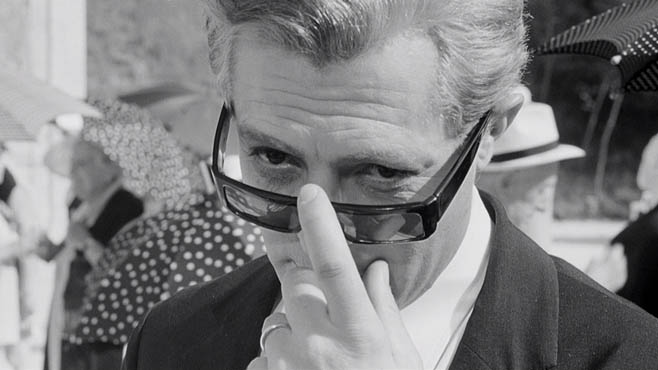All our discussions were, to reiterate, inspired by the release of the Sight & Sound Top Ten Poll which is conducted only once every ten years. I think we all know that this poll is a classy way of allowing high-minded critics, respected film writers, and all manner of long-working directors to muse on their selected art form, and really put their nose to the grindstone, choosing a definitive ten that are “the best.” It does also have a mild sheen of trying to make film criticism into something somewhat scientific, but choosing the best film ever made is hardly a scientific endeavor by any means. So relax. Even if Vertigo is not, in your opinion, the “Best Film of All Time,” I think we can all agree that its presence at the top of the list is a clear indicator that the film is at the very least worth your attention.
We said this several times throughout the episode, but I think it bears repeating here. These lists, despite the authority and professional clout they carry, and the air of actual definitive evidence, should perhaps be seen by non-professionals as an elaborate and authoritative list of recommendations. I’m willing to bet that the average teenager or even twentysomething student, provided they’re not attending film school, has likely not seen all the films in the BFI top ten (even Bibbs had to catch up to Tokyo Story, a film I’d love to see him review), and in some cases, has perhaps not heard of a few of them.
And yes, while many classics can feel less like entertainments and more like homework, I would say that each of the films on that top ten list are worthy of your scrutiny. Yes, even 8 ½, even though I’m not so fond of that one. This is your chance to explore the upper echelons of the art form. Choose one or two that sound interesting, and watch them on a lazy Sunday afternoon. You’ll be glad you did.
Some words of practical advice for the interested, yet perhaps uninitiated would-be classics buff who are interested in dissecting the BFI top ten:
Vertigo
Vertigo is tough going the first time, and seems arch to the casual viewer. Indeed, it wasn’t until the second time I saw it that I began to see how grand and complex it is. And while you may dig the awesome visuals and weirdo psychosexual elements, I think the first-timer may be a little ground down by the odd story. I would recommend you see Rear Window first. Then Psycho. Then you’ll be able to dig Vertigo a little more.
Citizen Kane
You know this film, you know the story, and you know the reputation. As I said above, a great film can feel like work. A good film, you can toss off in an evening. But a GREAT film? That requires concentration. Here’s my advice on the Kane phobic: Don’t try to love it. Think of it as just another movie. Just follow the story. I think you may find yourself loving it anyway.
Tokyo Story
Yasujiro Ozu’s 1953 domestic drama is one that only people who are intimately familiar with the film form seem to truly appreciate. Ozu, in my mind, lives at the end of a long road, along with Robert Bresson, as one of the final stops in your exploration of great movies. For the average viewer, the pace of Tokyo Story will seem slow, and the events will seem insignificant. One piece of advice: Watch this film ninth in your top ten. Another piece: Watch your family’s last thanksgiving video first. Your own familiar angst may help you see what Ozu was getting at.
The Rules of the Game
Jean Renoir’s 1939 soap opera is grand and theatrical. I would recommend listening to some Vivaldi first. And then look at the film as if it were a really arch comedy. Maybe watch Robert Altman’s Gosford Park first. Or an episode of Downton Abbey.
Sunrise: A Song of Two Humans
1927. That was a long time ago. As we said on the show, silent films are a tough sell to teenagers raised on noise. I would just use this opportunity to remind you that many silent films are less about the kind of “realistic” melodramatics that most Hollywood films tend to leak copiously, and more about an over-the-top form of operatics. Open your mind to the larger form of drama on display. You’ll see how loving and tragic and ultimately hopeful this film is.
2001: A Space Odyssey
Just see this one. Period. You know Kubrick. You kow the film. No more excuses. Watch it. If you’ve seen it, watch it again. If you hate it, well, you are wrong. Better advice: If you can, see it in a theater, on a big, big screen. Suddenly, the cosmos will seem even larger.
The Searchers
As we said on the show, John Ford’s 1956 entropy western is perhaps the most “conventional” of the bunch, following, as it does, recognizable characters, and having a more conventionally melodramatic story. It’s a bit dour, but it’s likely the most accessible of the films on this list. Watch this one first.
Man with a Movie Camera
Okay, this one is hugely oblique, and way hard to get through, even for many wizened film critics. My advice, then, is this: Turn the sound off, and listen to different music. Silent films were, back in the 1920s, typically accompanied by live musicians, and often didn’t have a set score. Choose a record from your collection that has no lyrics, and play it with Man with a Movie Camera. Your own music might keep you watching more closely.
The Passion of Joan of Arc
Carl Theodor Dreyer’s 1927 film is such a heartbreaking film, I’d say it needs little alteration. My only advice would be to do a bit of reading on Joan of Arc herself. As it stands, the film is pretty solid.
On 8 ½. Like Vertigo, it will help if you know something about the filmmaker himself going in. Federico Fellini’s 8 ½ is, without argument, one of the more self-indulgent films ever made. It’s all about the filmmaker’s personal sexual foibles, memories, and circus subconscious. I would recommend you watch Fellini’s Nights of Cabiria first. Then his masterpiece La Dolce Vita. If that seems too hard, at least do some reading on Fellini. Then you may be prepared to look into his brain.


